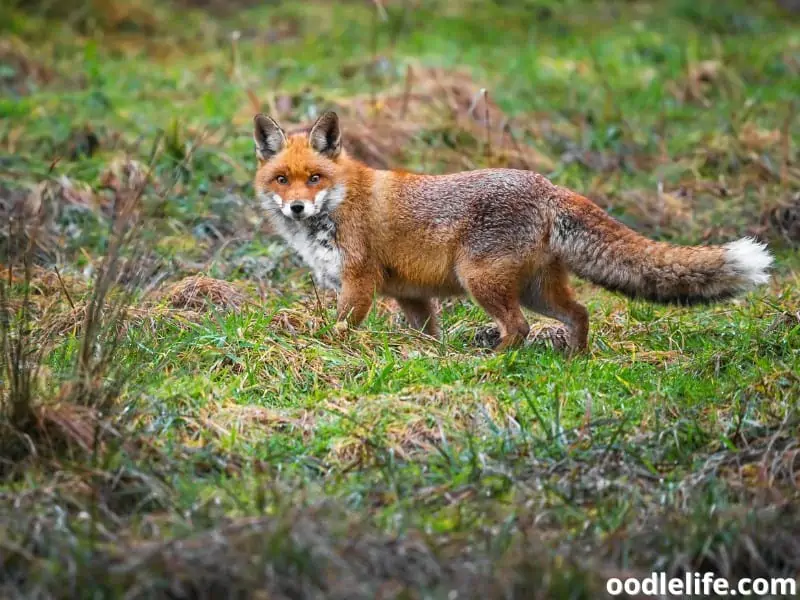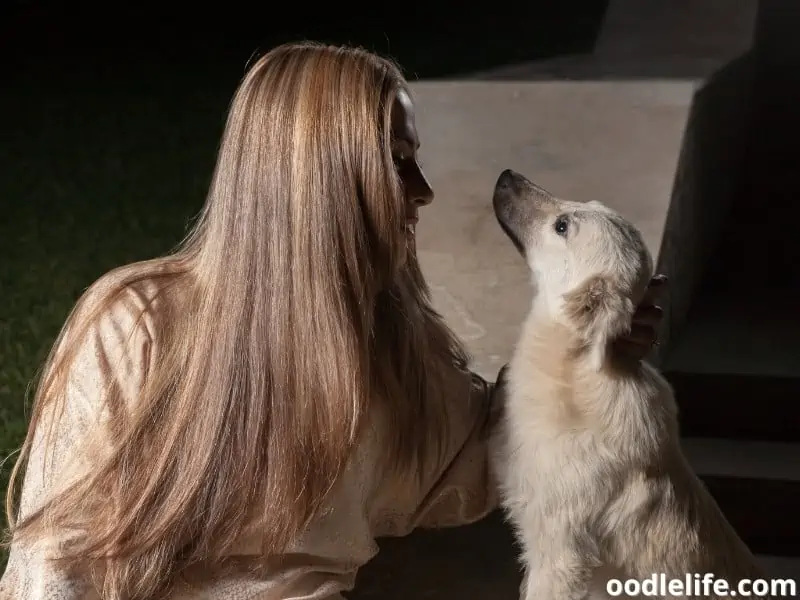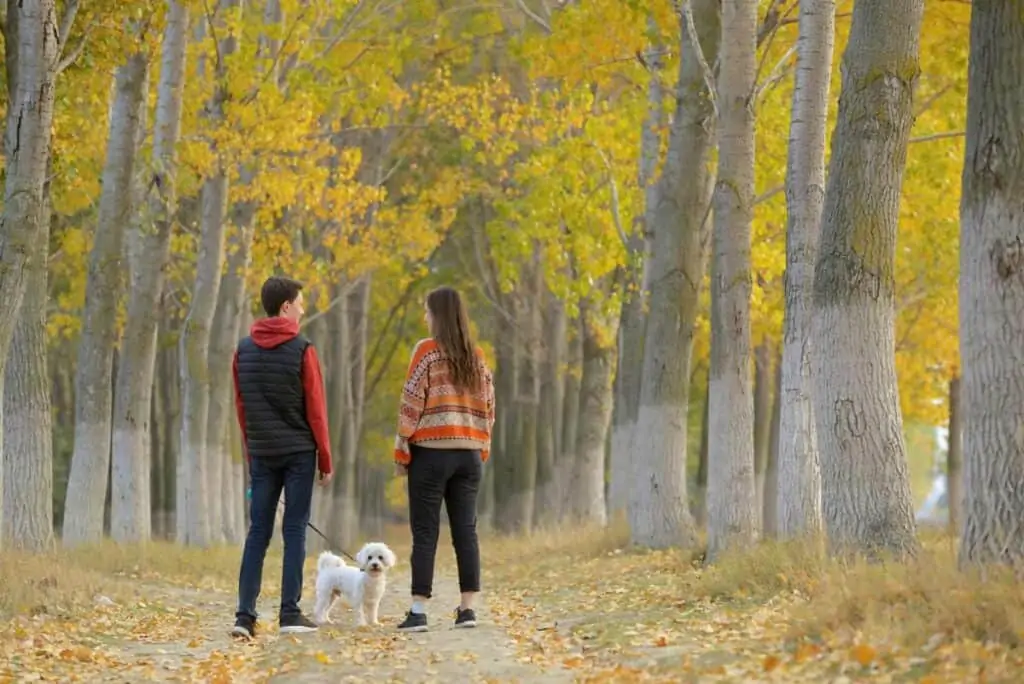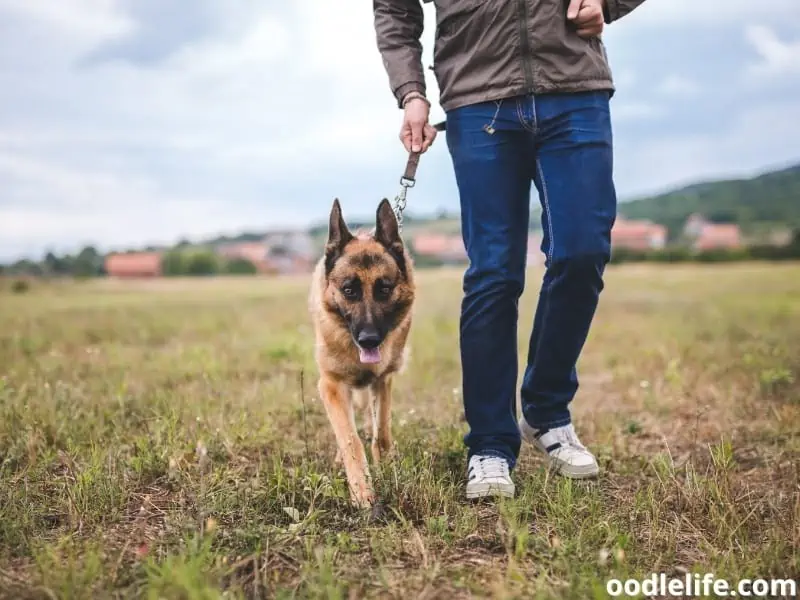Are Foxes Dangerous to Dogs?
Foxes and humans are like oil and water: They don’t mix well. Even though there seem to be more stories of foxes living among humans, these small animals are relatively skittish and unlikely to confront or attack dogs intentionally, especially to eat them.
Small dogs rarely fall prey to foxes, but it does happen. Cats have also been the victim of attempted fox predation. However, often, this results from a fox infected with rabies coming into close contact with a family pet rather than a healthy animal trying to make a meal from a dog.

The best rule of thumb is that foxes rarely harm dogs. Foxes will naturally avoid even small dog breeds. It’s much more likely that a dog will chase a fox and provoke a confrontation!
Let’s look more carefully at how and when foxes are dangerous to dogs and what you can do to keep your pup as safe as possible.
Why Foxes Aren’t a Big Danger to Dogs?
In general, foxes will avoid contact with humans and our pets. However, many types of foxes are found worldwide, with more than 23 species living in the wild. There are even some domesticated foxes kept as pets. In North America, there are four main types of foxes.
So, while they tend to be active when darkness is approaching or fading, there are subtle differences in fox behavior, depending on where they live and their genetic makeup.
Consider that the average fox is an omnivore, eating a diet that’s a mix of plant material and meat. They are excellent hunters, and their diet is rich in small animals like rabbits, squirrels, mice, hamsters, and other small animals.
They’ll also eat other small prey animals, like fish, birds, frogs, turtles, and some insects. So, they’re unlikely to target even the most miniature dogs, as they’re just a little too big for your average fox.
Large animals, like humans and dogs, represent a threat to a fox. Plus, all but the very most miniature dogs and other pets are too large for a fox even to try and prey upon. Accordingly, foxes are keen to avoid us, and a barking dog is usually enough to send a fox running in the opposite direction.

Foxes Can Be Dangerous Even if They’re Not Hunting
Foxes are unlikely to look at your dog as a dinner treat. However, since they’re wild animals, they can still pose a threat to you and your pets. Check out this chart that explains some other risks of having your dog close to a fox.
Non-Predatory Threats Posed to Dogs By Foxes
| Threat | Risk(s) |
| Fox bites, nips, or scratches | Infections, Rabies |
| Fox scat | Roundworm, salmonella, or listeria if ingested by a dog |
| Fleas | Infection, itching, discomfort, or disease caused by close proximity |
| Ticks | Infection, itching, discomfort, or illness caused by close proximity |
| Weil’s disease | Bacterial infection from drinking water tainted by fox urine |
| Mange | Parasitic infection that causes pain and fur loss |
As you can see, even without necessarily trying to eat them, a fox can pose a significant health risk to your dog. So, it’s essential to do what you can to avoid them running into each other.

Keep Dogs Safe From Foxes
Even though it’s pretty unlikely your dog will be a prey target for a fox, you can take some steps to keep your dogs even safer. It helps to understand a few facts and adjust your behavior to limit potential exposure.
Foxes Are Pretty Small
On average, a fox is too tiny to hunt most dogs. Even the largest breed, the red fox, won’t go after any animals that are larger than half their size. So, if your dog weighs more than six or seven pounds, it will likely send any fox running.
If you have a smaller dog, it might be more likely to look like a snack. So, consider keeping a small dog on a relatively short leash when out and about.

Where Foxes Are Likely to Hang Out
The easiest way to find yourself face to face with a fox is to surprise it in its home territory. So, consider the woods and their immediate surroundings the ideal place to find a fox. Expect to find one trotting along paths at the edge of the woods, along established deer trails, and even in urban areas where they might come looking for food.
Fox activity peaks just after sunrise and before sunset, so be most alert when there is less sunlight and foxes might be on the prowl. You might even consider skipping walks and adventures with your dog during these periods of increased fox activity.

Avoid Fox Dens
Foxes breed only once annually, unlike other animals that might rear young more often. Thus, they are very protective of their little ones. Male foxes often stray from the den to hunt, while the female fox, known as a vixen, remains on-site and alert.
If you inadvertently disturb their cozy nest, they are bound to react aggressively.
Additionally, if you were to get between a fox and its litter of babies, you could experience similar aggression. Vixen, in particular, can be extremely violent when they sense a threat to their litter.
So, if you see persistent fox activity on your property, call an animal control officer for help. It’s best not to allow your dog outside until the issue is mitigated. If you have to let them out, make sure to leash them and stay clear of the foxes.

Keep Your Dog Safe From Fox Attacks: Defensive Measures
By now, you should know that most dogs are relatively safe from fox predation. Tiny dogs might be more likely to fall victim to a fox attack, but that’s also pretty rare. Take care with puppies and smaller breeds, but as a rule, they’re pretty safe.
Whatever their size, you can also do your part to keep your dog safe from foxes.
Keep Foxes Safe From Your Dog
The more you can do to limit your dog from venturing into fox territory, the better. It keeps both your dog and the local foxes safe!
Keep areas on your property clear of debris and other potential camouflage that might conceal fox movements. Don’t leave areas like sheds or the space under a porch accessible. Instead, seal them up so a fox isn’t tempted to shelter or raise a litter within it.
You can also use collar attachments to announce your dog’s presence. By adding a bell or similar noise-maker to your dog’s collar, it will create a sound that warns foxes and other animals of their presence when your pup is trotting around on your property, even off leash and when you’re not paying attention.
Your dog is, by nature, probably pretty curious. So, in addition to a bell and practical steps to make your yard less inviting for foxes, make sure to define boundaries clearly. You can use an invisible fence to limit the territory available to your dog, minimizing the risk of their curiosity getting the better of them.
You can also limit the chances of finding foxes on your property by:
- Removing all fox food sources from your property.
- Never leaving dog food unattended outside.
- Installing motion-activated lights to ward off unwanted visitors.
- Installing ultrasonic animal deterrents that scare off nuisance animals.

Vaccines Are Important
Vaccination is one of the most important ways to keep your dog safe from foxes. By maintaining their rabies vaccine, you are mitigating the threat from perhaps the most likely source of danger from a fox encounter.
Rabies is potentially lethal for a dog and easily transmitted through a rabid fox’s saliva. While there are treatments, it’s good insurance against possible exposure to treat your dog with a vaccine before any incident might even occur.

Should Dog Owners Worry About Fox Attacks: Bottom Line
Dog owners need to be aware of the risk of fox encounters. However, in general, foxes are not a significant danger to dogs. The risk of predation increases in reverse proportion to your dog’s size.
So, if your dog is on the smaller side, perhaps be more concerned and aggressive with your mitigation and leashing.
The most prevalent threat to dogs posed by a fox encounter isn’t predation but disease or infection. So, take all the steps you can to minimize the risk of your dog encountering a fox. Even if you think the risk is small, keep a close eye on your dog whenever it roams your yard off leash.